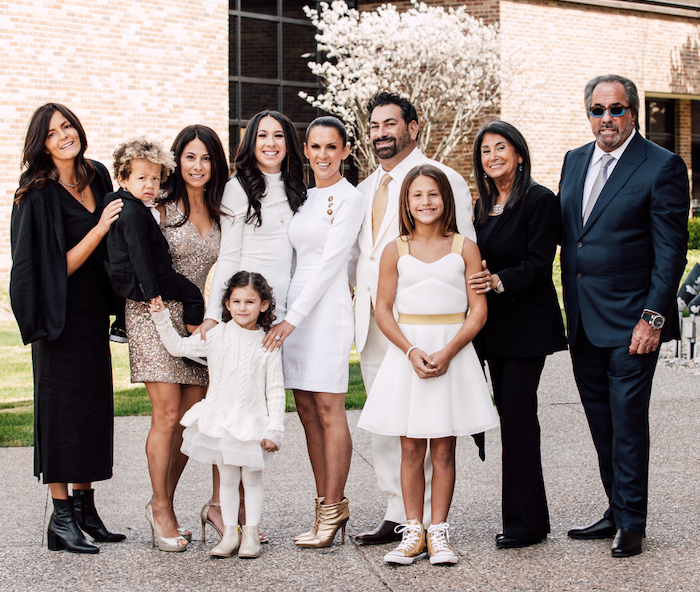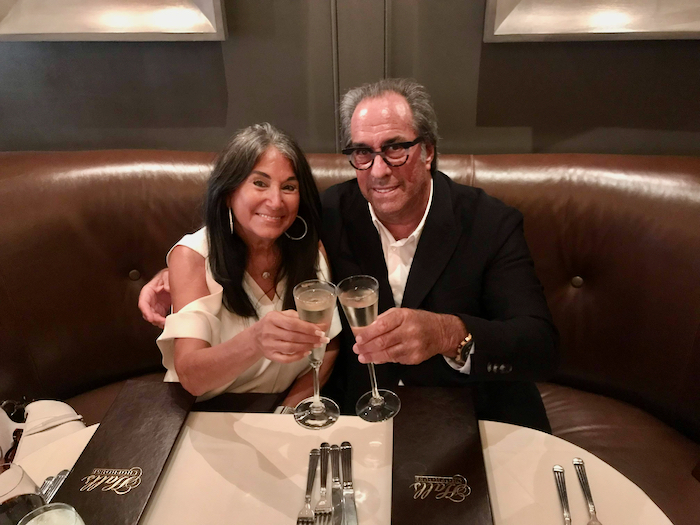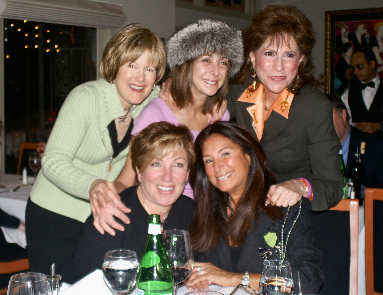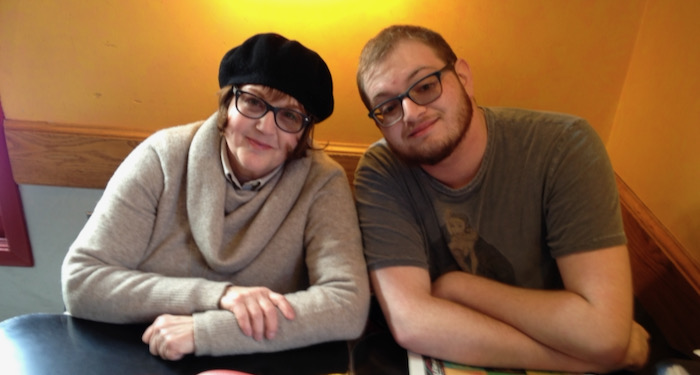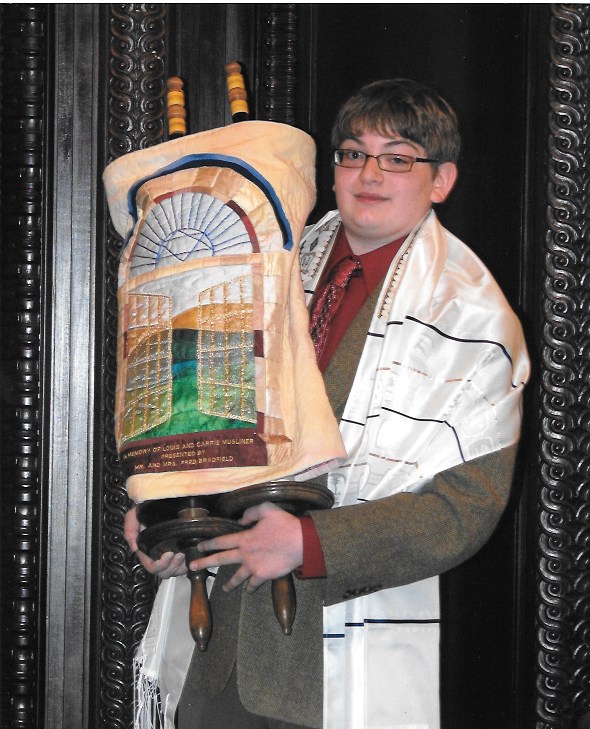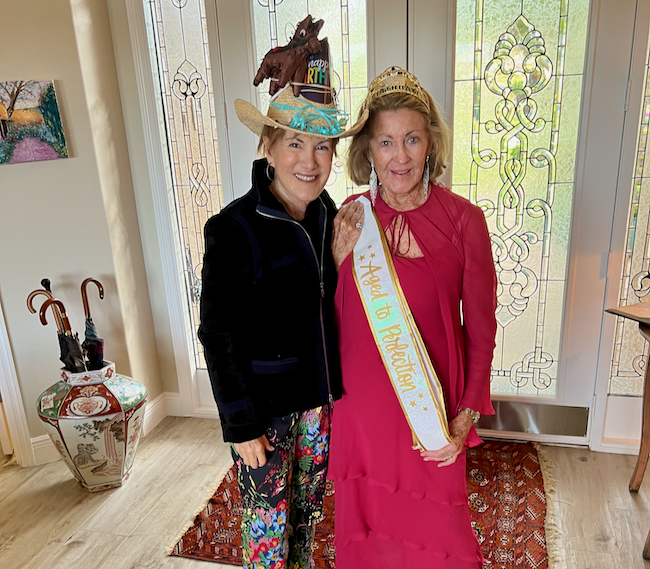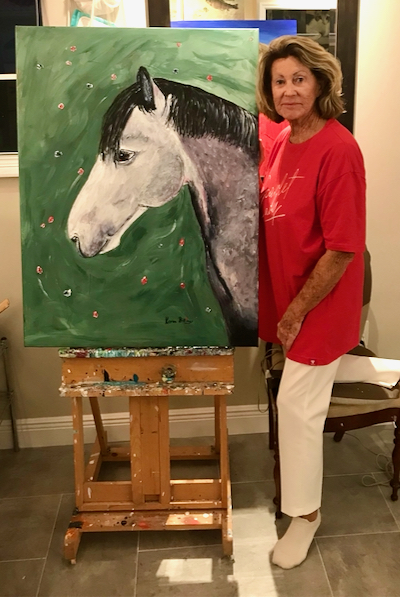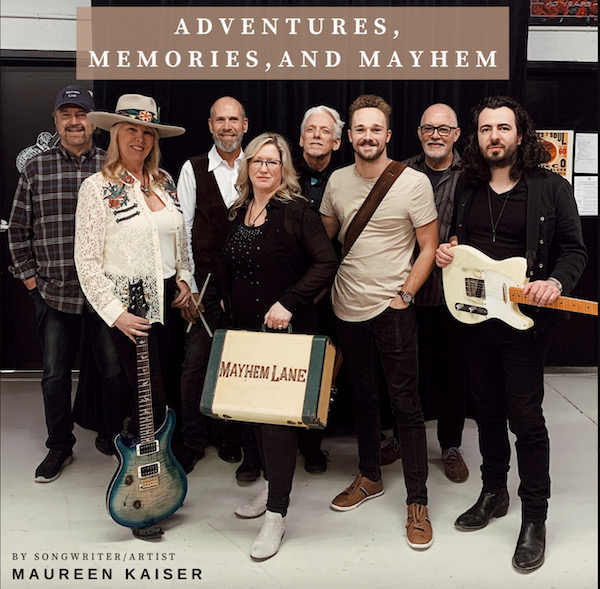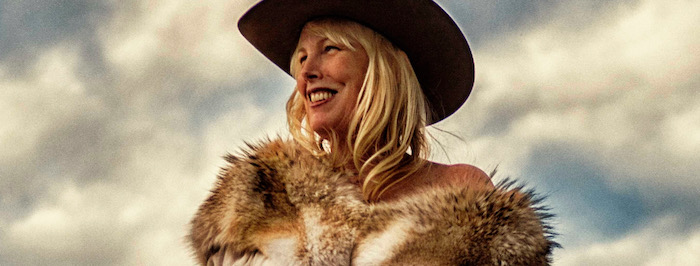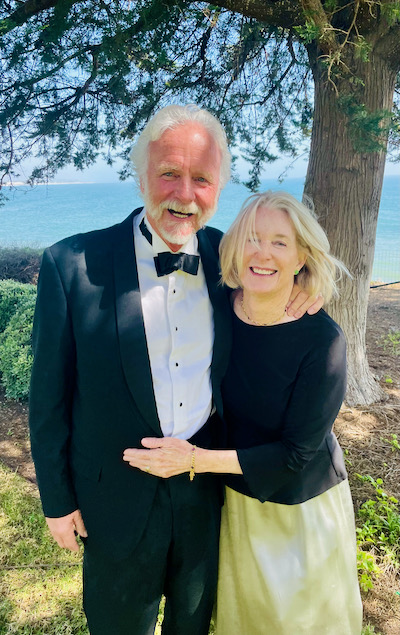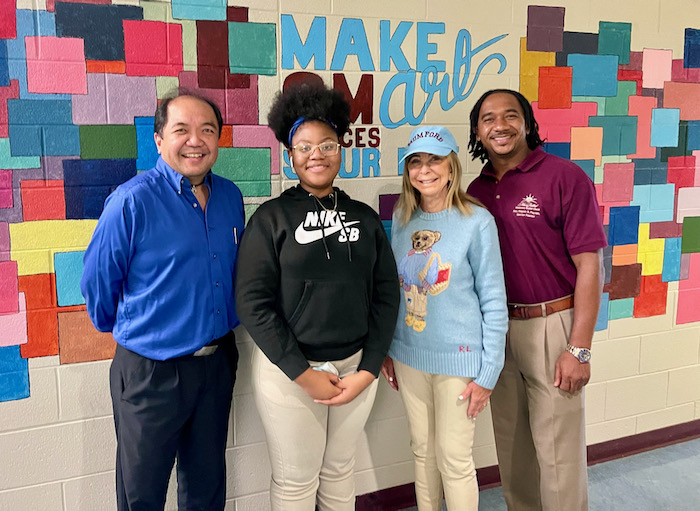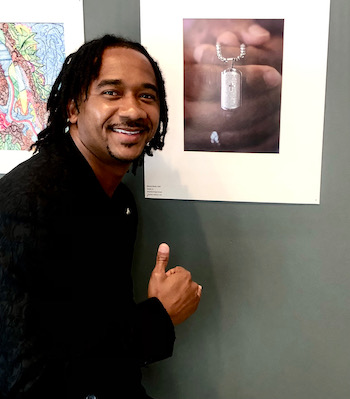“I’ve always liked the notion of meeting the great figures of history. But then I think, what if it’s like high school and all the really cool dead people don’t want to hang out with me? Mozart will tell me he’s busy but then later I’ll see him out with Shakespeare and Lincoln.”
Niles Crane, Frasier
At 79, Joyce Greenleaf is the happiest she’s ever been. Retired from teaching, she still plays tennis, swims, walks and rides her bike. And she’s revised some thinking that no longer serves her.
Joyce and I were roommates and sorority sisters (SDT) at the U of M. 50+ years later, we’ve reconnected on FB. Now 79, Joyce had moved to LA, taken up acting and scored some minor roles. But the part of her life of which she’s proudest: her 34-year teaching career.
Joyce decided on her destiny at age 6. Her parents turned a corner of her bedroom into a classroom with a desk, blackboard and colored chalk. To her “students” (neighborhood friends) she taught what she learned in Miss Libby’s first grade class.
Joyce’s favorite elementary school teacher, Miss McCormack, taught 6th grade. Past students knocked on her door when walking by. Joyce says, “I wanted to someday be the kind of teacher whose past students knocked on my door.” She also “always wanted” to teach in a low-income neighborhood and was “thrilled” when assigned to PS28, an elementary school just north Harlem. Her students were mostly African American and Dominican.
“I got to teach what I was good at. I loved, loved, loved teaching.” These days past students knock on her Facebook door. She’s celebrated six reunions with her NYC students.
With a master’s degree from Columbia U. Teachers College, Joyce taught the required curriculum. She also developed a Creative Expressions class and taught “life lessons” through music, drama, poetry, creative writing and film. She took students on field trips and weekend explorations. She felt it was “extremely important” to build kids’ self-esteem. She worked with her kids to stage full length Broadway plays, ran a glee club that performed every year at the Plaza Hotel and a broadcasting team. Her ”Junior Dimensions” newspaper team received national recognition. One class went to Washington D.C. for five days. Students raised the money through bake sales and other efforts. They chartered a bus, stayed in dorms at Howard U, sang songs all the way home.
“I wanted to help my students reach their potential and introduce them to experiences outside their neighborhood. I wanted to make a difference.” Because her students were mostly African American, Joyce taught poems and stories by Langston Hughes and other important Black writers. In recent years, one of her students wrote on Facebook: “It was a white teacher who introduced me to black history and taught me the Black National Anthem, Lift Every Voice and Sing.”
There was a show in 1970, The Me Nobody Knows. One of the earliest rock musicals to play on Broadway, it was also one of the first to express the sentiments of inner-city American youth. Inspired by the play, Joyce had her students journal about their feelings and share them on stage. Her parents came to every school performance for 20 years.
Joyce calls her mother, Freddie, “the most important person in my life.” Freddie was also a teacher. Joyce chartered a bus and brought her students to Freddie’s school to perform. Sadly, at 65, Freddie was diagnosed with liver cancer. Six weeks before Freddie died, Joyce moved home. “I could talk to her about anything,” Joyce says. Shortly before Freddie died, Joyce sat on her bed. “It’s okay to cry now, but promise me you won’t cry later,” Freddie said. Joyce crossed her fingers behind her back and nodded. “I cried every day for the next 2½ years. My students were the one thing that saved me.”
Joyce has always been an athlete. When she was 8, her dad, Joe Greenleaf, taught her to smack a softball. She played H.S. Varsity all four years. Joe introduced her to the Brooklyn Dodgers and took her and her brother to games at Ebbets Field. Joe was a Jackie Robinson fan. On April 15, 1947, Jack Roosevelt Robinson became the second-baseman for the Brooklyn Dodgers, the first African American player in Major League baseball in modern times. Since 2004, baseall has honored Robinson’s legacy by celebrating April 15 as Jackie Robinson Day. On that day, players, coaches and managers wear Robinson’s uniform number 42.
Joyce had #42 tattooed on her lunch box and her bedroom lamp and her own Dodgers uniform. When Joyce was teaching, she invited Jackie Robinson to speak to her graduating 6th grade class. She framed the letters Jackie wrote to her—one, accepting the invitation; the second, thanking her for the chance to speak to her students about saying NO to drugs.
At 46, Joyce moved to California to be near her brother and “start a new adventure.” Still teaching, she “found a new passion” and began taking acting classes. “I felt I was home.” Her teacher told her acting was a process; she’d continue to learn and grow. Though she considers herself “impatient,” she accepted her teacher’s wisdom. 33 years later, she still takes classes. She’s “having a terrific time” playing many smaller roles in sit-coms and dramas and is “excited” about her future.
Joyce is dedicated to her acting ambitions. She had a bit part in How We Roll, a TV show that ran for one season. One of her favorite experiences was working on Ray Donovan with Liev Schreiber.
As much as Joyce loved teaching, as a student she’d hated high school. Recently invited to her high school reunion, her first thought was: NO WAY.
In high school, she says, “I never felt as though I fit in.” Whenever an email arrived about a high school reunion, she deleted it. A recent email asked classmates to write about their high school memories and what they’d done with their lives. “The more I read, the more interesting I found my old classmates to be. Many had done so much with their lives. I was surprised to learn a lot of them felt the way I did about their high school years. I was about to send my regrets, say I wished I could come. And then I asked myself if that were true. The next thing I knew I had a flight to New York and a reservation at the hotel.
“Attending that reunion was one of the best decisions I ever made. I decided to create new memories. My old classmates turned out to be nice, bright, friendly people. I was asked to be part of a comedy scene and worked with an outstanding actor/classmate. We collaborated on the script. I had a creative high and loved the attention. I came home with new memories and have already been in touch with my new old friends. The reunion opened up new directions. Life continues to be exciting. My parents chose the perfect name for their youngest child. I share my joy with everyone I meet. I may be 79, but I have the spirit of a 10 year old.”
Joyce exudes the same warmth and pep she showed in college. She wrote and self-published a book, Curtains for My Mirror: A Humorous Approach to Coping with Aging. Her goal was to prepare women for physical changes that occur. “It shares life lessons I’ve learned over 79 years.” One lesson: give lots of compliments. Another: wear a towel at the swimming pool.
Rabbi Jonathan R. Katz says, “A benefit of age is the acquisition of greater perspective. We shouldn’t lament that if we’d known before what we know now we’d ‘have drunk more champagne.’ Rather, since we are fully cognizant of what we endured to arrive where we are, we should drink much more of the bubbly now.”
While Joyce has had several serious relationships, she “never found Mr. Right.” Ever the optimist, she still hopes to find a long-term companion. “I know it’s improbable, but it’s not impossible,” she says. “In any case, I’m happy. I’ve had a wonderful life.”
Thanks, Joyce, for sharing your wonderful life. May you inspire all Godsigns readers to remain forever young.



